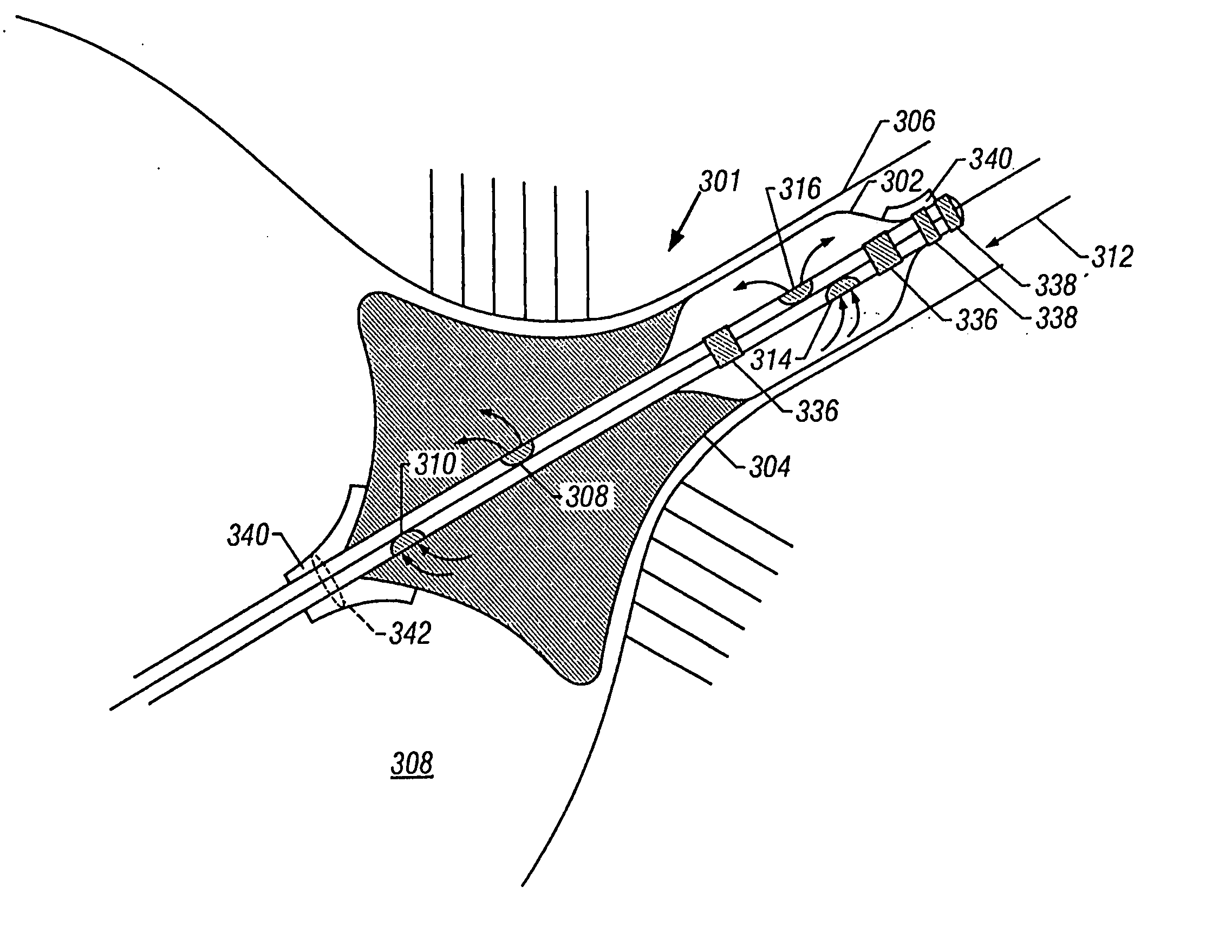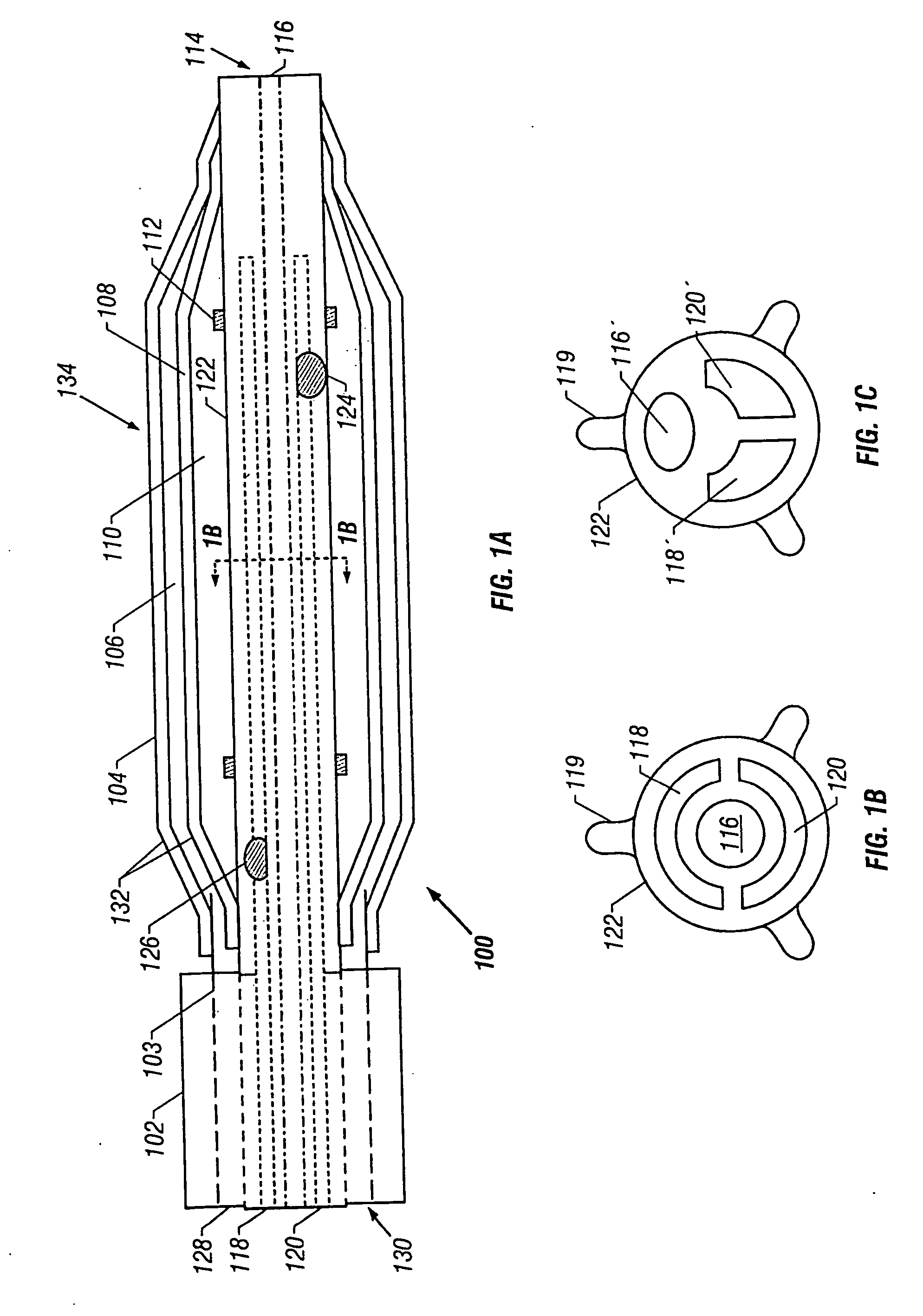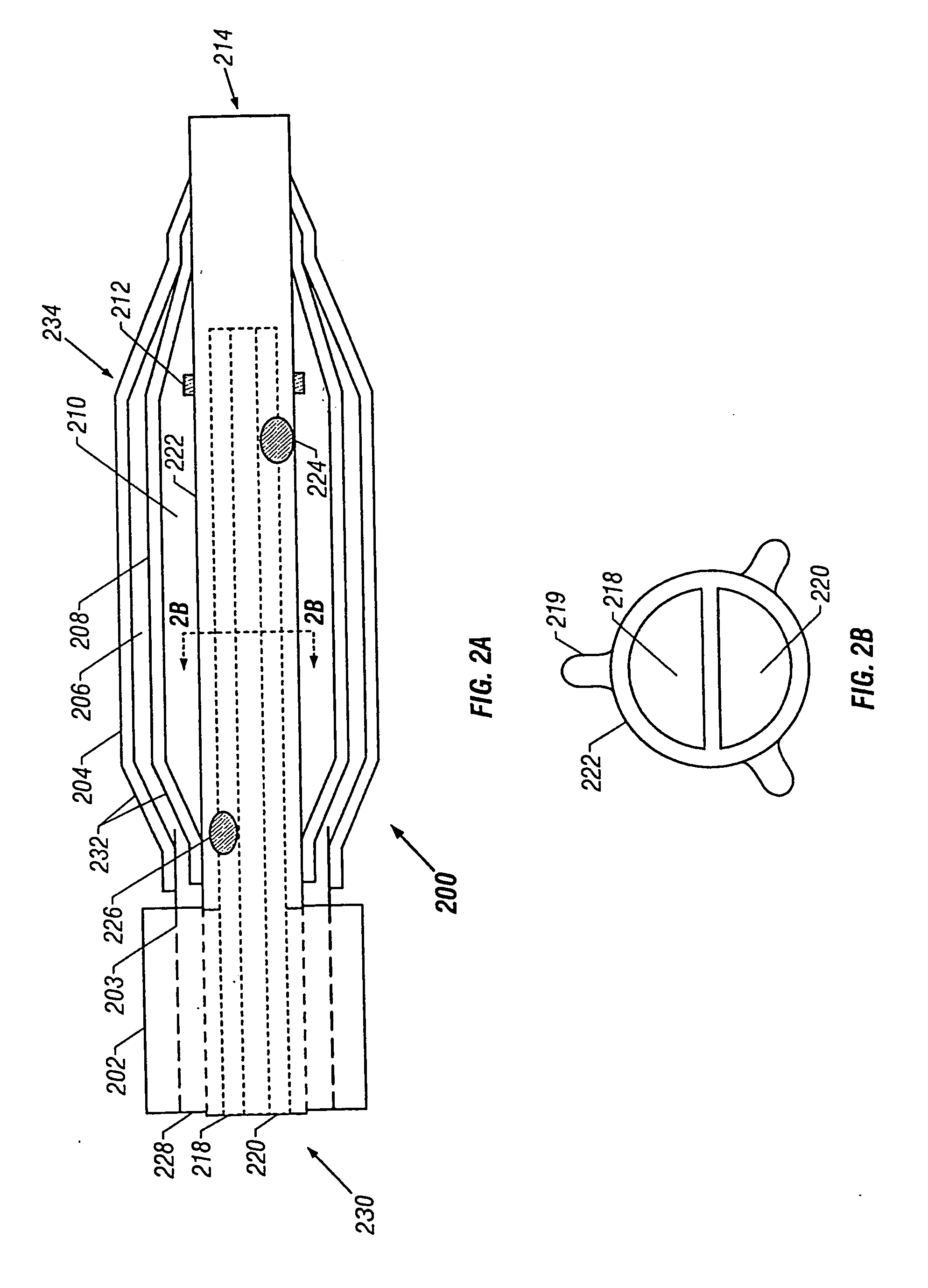Method and device for performing cooling- or cryo-therapies for, e.g., angioplasty with reduced restenosis or pulmonary vein cell necrosis to inhibit atrial fibrillation employing tissue protection
a technology of pulmonary vein cell necrosis and cooling-or-cryotherapy, which is applied in the field of cooling-or-cryotherapy, can solve the problems of lack of synchronization between heartbeat and pulse, circumferential tissue portions, and atrial fibrillation, and achieves the effects of reducing or inhibiting reducing the rate of restenosis, and facilitating the resection
- Summary
- Abstract
- Description
- Claims
- Application Information
AI Technical Summary
Benefits of technology
Problems solved by technology
Method used
Image
Examples
first embodiment
[0057] Referring to FIG. 1A, a catheter 100 is shown according to the invention. The catheter 100 has a proximal end 130 and a distal end 114. Of course, this figure is not necessarily to scale and in general use the proximal end 130 is far upstream of the features shown in FIG. 1A.
[0058] The catheter 100 may be used within a guide catheter 102, and generally includes an outer tube 103, a dual balloon 134, and an inner tube 122. These parts will be discussed in turn.
[0059] The guide catheter 102 provides a tool to dispose the catheter 100 adjacent the desired location for, e.g., angioplasty or reduction of atrial fibrillation. Typical guide catheter diameters may be about 6 French to 9 French, and the same may be made of polyether blockamide, polyamides, polyurethanes, and other similar materials. The distal end of the guide catheter is generally adjacent the proximal end of the dual balloon 134, and further is generally adjacent the distal end of the outer tube 103.
second embodiment
[0060] The ability to place the guide catheter is a significant factor in the size of the device. For example, to perform angioplasty in the carotid arteries, which have an inner diameter of about 4 to 6 mm, a suitably sized guide catheter must be used. This restricts the size of the catheter 100 that may be disposed within the guide catheter. A typical diameter of the catheter 100 may then be about 7 French or less or about 65 to 91 mils. In a second embodiment described below, a catheter for use in the coronary arteries is described. Of course, which catheter is used in which artery is a matter to be determined by the physician, taking into account such factors as the size of the individual patient's affected arteries, etc.
[0061] The outer tube 103 houses the catheter 100 while the latter traverses the length of the guide catheter 102. The outer tube 103 may have a diameter of about 4 French to 7 French, and the same may be made of polyether blockamide, poly-butylene terephtalate,...
PUM
 Login to View More
Login to View More Abstract
Description
Claims
Application Information
 Login to View More
Login to View More - R&D
- Intellectual Property
- Life Sciences
- Materials
- Tech Scout
- Unparalleled Data Quality
- Higher Quality Content
- 60% Fewer Hallucinations
Browse by: Latest US Patents, China's latest patents, Technical Efficacy Thesaurus, Application Domain, Technology Topic, Popular Technical Reports.
© 2025 PatSnap. All rights reserved.Legal|Privacy policy|Modern Slavery Act Transparency Statement|Sitemap|About US| Contact US: help@patsnap.com



